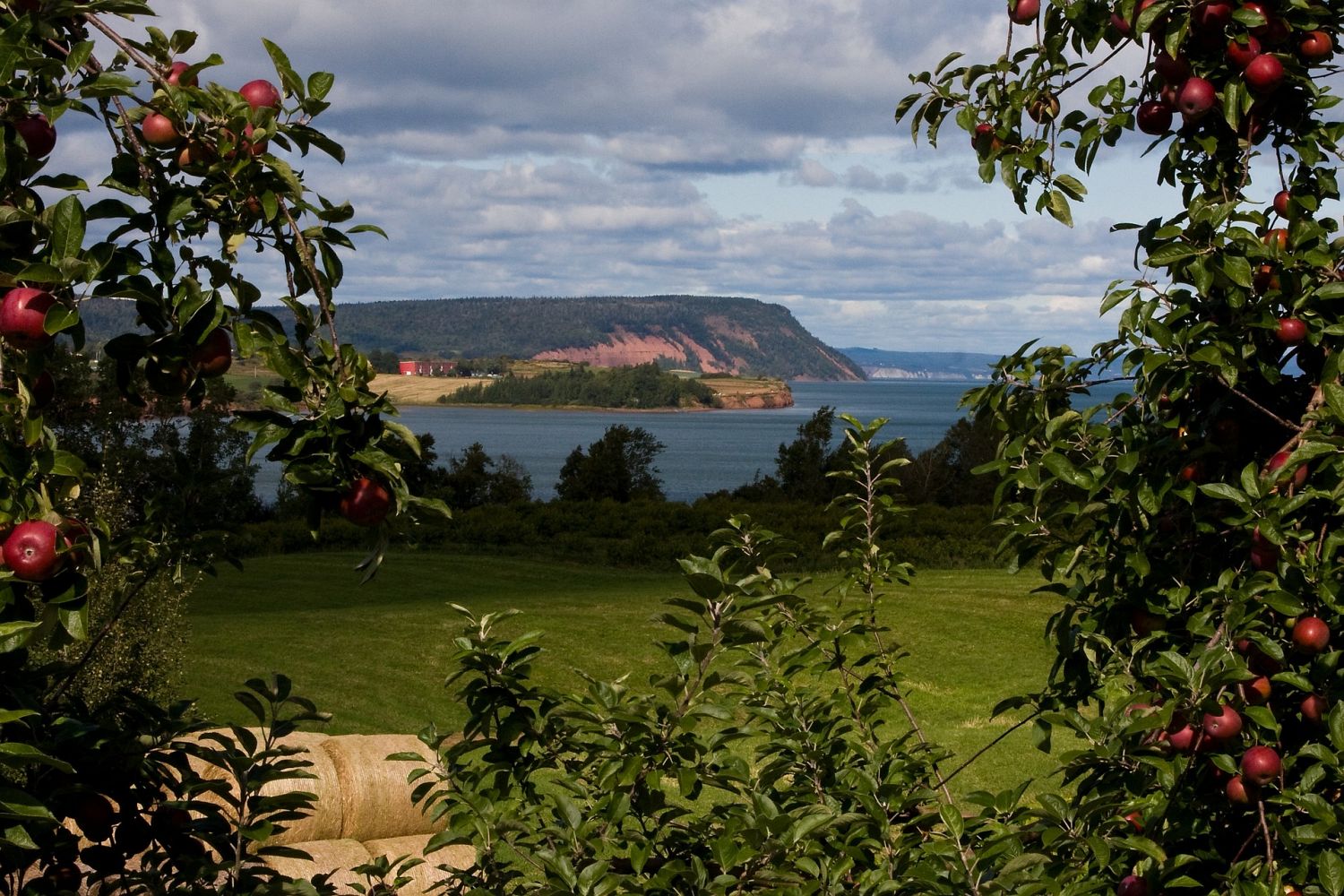Despite the protests of Nova Scotians, a 17-turbine wind farm project in that province has been given the go-ahead. Elemental Energy — the same company targeting Alberta’s beautiful river valley near Elk Point for a similar-sized industrial wind project — is behind the maritime wind plant. According to CTV News, the project was granted a 118 million dollar loan to support the Higgins Mountain Wind Project in Cumberland and Colchester counties. That’s in addition to Ottawa’s commitment of $25 million from Canadian taxpayers. The project will purportedly generate up to 100 megawatts of electricity, which could allegedly power more than 40,000 homes — but that’s only when the wind is blowing, not blowing too fast, or it’s not too cold.
The project was contested in court, but the judge overruled citizen’s concerns:
The group contended the minister failed to consider the impact of the project on area residents and outdoor tourism, but the judge ruled the minister’s decision was reasonable and based on all available information.
CTV News, September 25, 2024
Selling Out… for Generations
This is but a long and sorry history of politicians ignoring constituents in order to get into the green game — and it is a game of profit through the reselling of projects, sale of carbon credits to “offset” carbon footprints, and the selling out of a region’s beauty for an environmentally hazardous and damaging industry. It’s got nothing to do with “saving the planet” because no sane person, after reviewing the facts, would consider this technology remotely “environmentally friendly”:
Municipalities, hungry for revenue, frequently ignore the rural communities they represent and shrug their shoulders at the destruction of their farmlands and pristine viewscapes. And it’s not just happening in Canada.

An Italian town in Italy is ‘outraged’ at a proposed project that would see 200 metre (656ft) high turbines, four times the height of the 13th-century cathedral or duomo of Orvieto, built on the medieval hilltop.1 Campaigners are battling the planned construction among the olive groves, vineyards and woods of Umbria. The cathedral, considered one of the finest Gothic buildings in the country, was described by a pope as so sublime that, ‘on the Day of Judgment, it would float up to heaven, carried by its beauty.’
Why would any politician sell out the historic beauty of the region? That’s the question pinging around the world as beautiful regions are being permanently scarred for one of the most unreliable and intrusive energy sources ever conceived.
In the U.K., fishermen are decrying proposals to expand planned wind farm sites off the Devon and Cornwall coast, saying they will devastate the fishing industry. It comes after the Crown Estate, which owns the sea bed, published its latest map of potential development zones in prime fishing grounds.2
Why? Why would they do that?
Back here in Alberta, Elemental Energy has proposed an industrial wind farm on top of the North Saskatchewan, recently declared a Canadian Heritage River. It’s renowned for its steep forested river banks, plentiful fishing, recreation, and beauty. Who would even think to destroy such a pristine viewscape with 679ft tall towers plunked in between family farmhouses and acreages? But it’s more than that.
Industrial wind turbines aren’t “green” and never have been. They demand enormous amounts of fossil fuel to manufacture, transport, erect, and maintain. They have a short life span and, when they’re broken, collapsed, or at the end of life, there are almost no options for recycling, especially of their toxic BPA-coated blades. Add to that the now well-documented impacts on human and animal health, marine life, migratory birds, bats, insects, and even soil, and these are anything but environmentally friendly.
In Ballycumber, Ireland where some residents protested the ‘ugly and horrible‘ turbines proposed there, a politician replied: “It’s not about just today, we have to think of the future and we have to think of our energy.”3 Clearly, politicians who sign onto industrial wind are not thinking about the future much less about reliable energy. In Alberta, the province’s grid nearly failed several times this year due to a lack of wind and base energy supply after the former NDP government shuttered the province’s coal mines.
“You could have had 50,000 megawatts, all the solar farms and wind farms in the world located in Alberta, and it still wouldn’t have come anywhere close to closing that gap.”
University of Alberta economics Professor Andrew Leach, CBC News
Alberta Against the Current
Fortunately, there is a bright light in all of this, at least, so far. And that is the Premier of Alberta Danielle Smith and Minister of Affordability and Utilities, Nathan Neudorf. They have not only acknowledged the blight that turbines are on pristine rural viewscapes, but moved to restrict the erection of industrial wind within 35k of the province’s renowned mountains. In Saskatchewan, the province’s Wildlife Siting Guidelines for Saskatchewan Wind Energy Projects have called for 5km buffers around national and provincial parks and major rivers and sensitive ecological areas.

But several Alberta leaders are pushing the government to do far more. The County of St. Paul, known for its lakes, hills, and river valleys, passed a bylaw essentially restricting the height of wind turbines to 100m. Politicians there wrote the Premier, asking for a similar 35km buffer zone around the North Saskatchewan River and calling for protections for rural residents where projects are slated to be built in their “backyards.”
It would seem the Premier is sympathetic, as she had already declared in a press conference:
Albertans have been vocal that they don’t want large-scale developments to interfere with our province’s most beautiful natural features. You cannot build wind turbines the size of the Calgary tower in front of a UNESCO World Heritage site; or on Nose Hill; or in your neighbor’s backyard. We have a duty to protect the natural beauty and communities of our province.
Premier Danielle Smith, Press Conference, February 28, 2024; YouTube
Still, as the Fall sessions open, many Albertans anxiously await to see if the Premier will make good on her words. Wind Concerns, based on current studies, has called for a 15km buffer zone around inhabited dwellings to protect residents from the harmful effects of infrasound generated by turbines.
We believe the Premier and Minister Neudorf will make good on their promises. And if other Premiers, such as those in Ontario and Nova Scotia want to build turbines, go ahead — wreck your province. But we will continue fighting here in Alberta to protect the people, wildlife, and beauty of our lands.
Mark Mallett is a former award-winning reporter with CTV Edmonton and an independent researcher and author. His family homesteaded between Vermilion and Cold Lake, Alberta, and now resides in the Lakeland region. Mark is Editor in Chief of Wind Concerns.



These wind turbines destroy the beauty of our province. Wind turbines will never replace our present power source as they are unreliable as they do not control wind. This is nothing but another scam to obtain gov’t money which will never be repaid. People have to wake up to the harm these ugly structures will have to our landscape, the people, animals, birds, etc.
I recently saw 8 eagles within a half mile of one of the proposed wind turbine sites. Such beautiful birds.